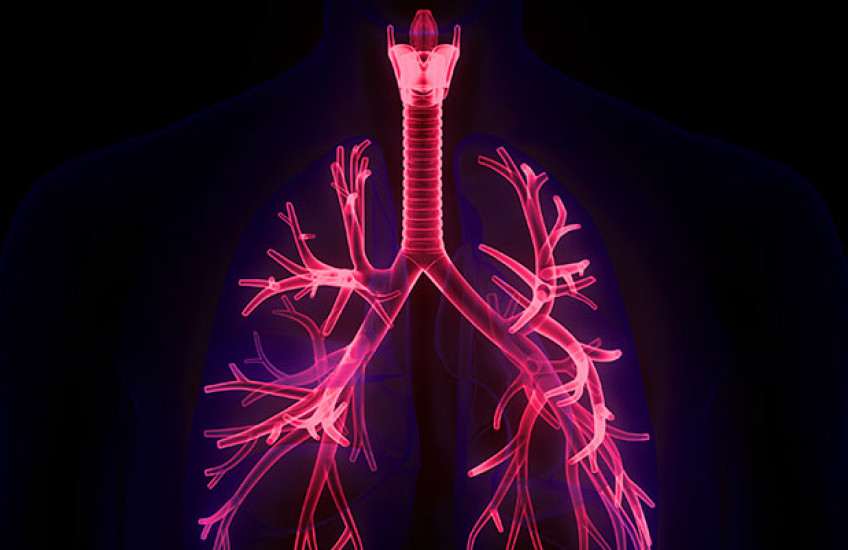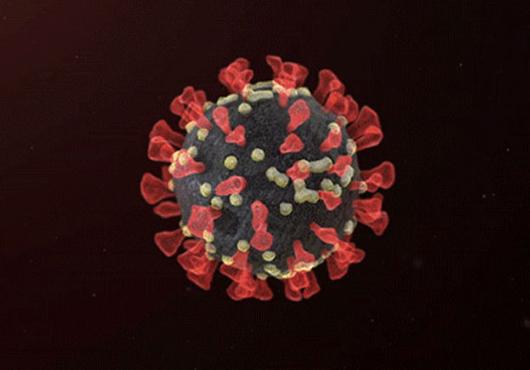The current COVID-19 vaccines have saved an estimated 20 million lives globally, but while they provide strong protection against severe disease, they do not reliably prevent infection and transmission.
Using a new approach, Harvard Medical School physician-scientists at Beth Israel Deaconess Medical Center and colleagues report that it may be possible to improve protection against SARS-CoV-2 infection by delivering the vaccine directly to the respiratory tract — the primary site of entry for the virus. Current COVID-19 vaccines, by contrast, are delivered into the muscle and work by stimulating antibody development and cellular defenses to prevent symptoms and severe illness.
The team’s findings are published in Nature.
If confirmed in humans, the new approach could inform the design of inhaler-based vaccines that shield the point where the virus enters the body, thereby working to resist infection rather than diminish symptoms and protect against serious illness, the researchers said.
“COVID-19 vaccines have changed the course of the pandemic and saved millions of lives, but they do not provide substantial protection against acquisition of infection. The reason why the current generation of SARS-CoV-2 vaccines may not ward off infection may be that they do not induce robust mucosal immune responses at the portal of viral entry,” said corresponding author Dan Barouch, HMS William Bosworth Castle Professor of Medicine and director of the Center for Vaccine and Virology Research at Beth Israel Deaconess.
“In this study, we demonstrated that novel immunization strategies can markedly increase mucosal immunity in nonhuman primates and improve protective efficacy,” Barouch added.
Barouch and colleagues primed 40 adult rhesus macaques with the Ad26 COVID-19 vaccine (Janssen/Johnson & Johnson) given by an injection in the muscle — like the shot in the arm human adults typically receive. Nearly a year later, the animals received a booster.
Three groups received either a dose of the Ad26 vaccine in the muscle; in the nose by a nasal spray; or in the breathing passage, the trachea, by nebulizer or inhaler. A fourth group received a dose of the bivalent mRNA vaccine (Pfizer-BioNTech) in the nose. A sham group received no boosters.
The animals were then exposed to a high dose of the virus. The investigators sampled their blood, nasal, and lung fluids to monitor immune responses. The group that received the Ad26 booster by nebulizer or inhaler had near-complete protection against SARS-CoV-2 and developed superior mucosal immunity, compared with animals receiving the nasal spray or a shot in the arm.
In contrast, mRNA intranasal boosting proved ineffective, suggesting that improved formulations will likely be required for effective delivery of mRNA vaccines by nebulizer or inhaler.
Taken together, these findings suggest that novel immunization strategies that focus on improving defenses at the site of viral entry can augment mucosal immunity and improve protection against SARS-CoV-2 infection and against other viral infections as well, the researchers said.
Authorship, funding, disclosures
Co-authors included co-first authors Katherine McMahan, Malika Aid, Michaela Sciacca, Jinyan Liu, Nicole P. Hachmann, Jessica Miller, Catherine Jacob-Dolan, Olivia Powers, and David Hope; Cindy Wu, Juliana Pereira, Tetyana Murdza, Camille R. Mazurek, and Amelia Hoyt of Beth Israel Deaconess; co-first author Frank Wegmann, Jeroen Tolboom, Jan Serroyen, Laura Solforosi, Lea M.M. Costes, and co-senior author Roland C. Zahn of Janssen Vaccines and Prevention B.V.; Adrianus C.M. Boon of Washington University School of Medicine; Meredith Davis-Gardner and Mehul S. Suthar of Emory School of Medicine; Amanda J. Martinot of Tufts University Cummings School of Veterinary Medicine; and Mona Boursiquot, Anthony Cook, Laurent Pessaint, Mark G. Lewis, and Hanne Andersen of Bioqual.
This work was supported by Janssen, Gates Foundation (INV-027406, INV619 041469), National Institutes of Health (CA260476), the Massachusetts Consortium on Pathogen Readiness, and the Ragon Institute of Mass General, MIT, and Harvard.
Barouch, Wegman, and Zahn are co-inventors on provisional SARS-CoV-2 vaccine patents 635 (63/121,482; 63/133,969; 63/135,182). Wegman, Tolboom, Serroyen, Solforosi, Costes, and Zahn are employees of and may hold equity in Janssen. The rest of the authors report no other conflict of interest.
Adapted from a Beth Israel Deaconess news release.






